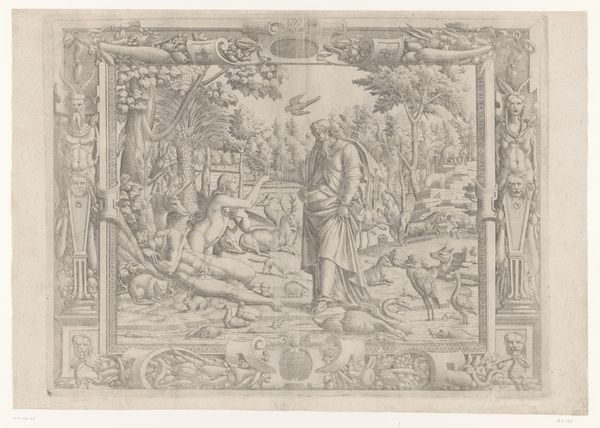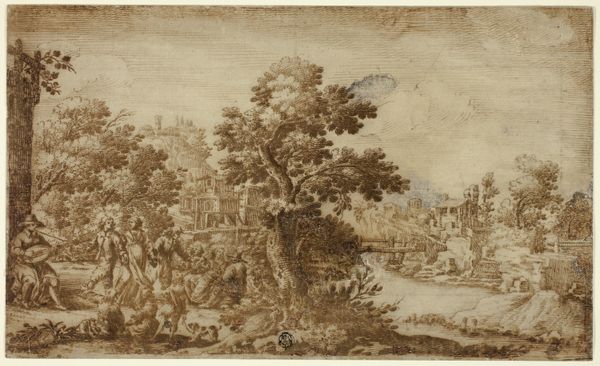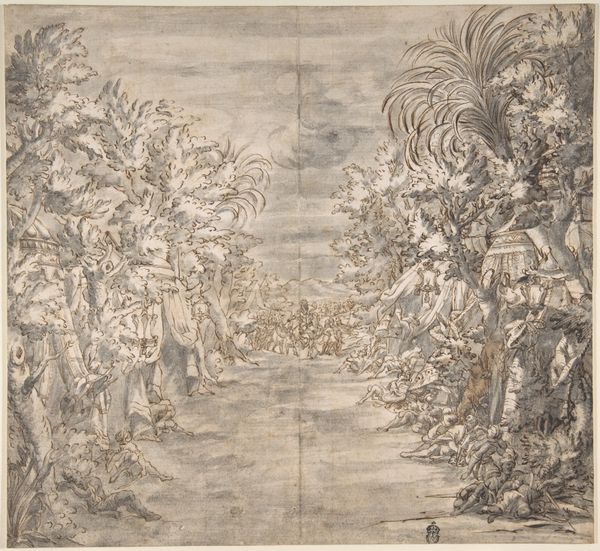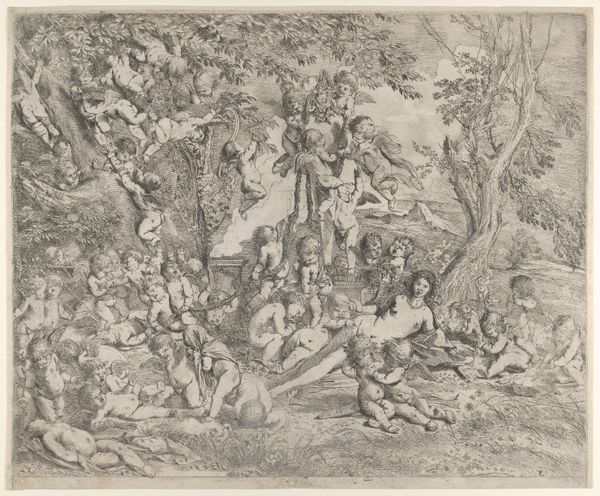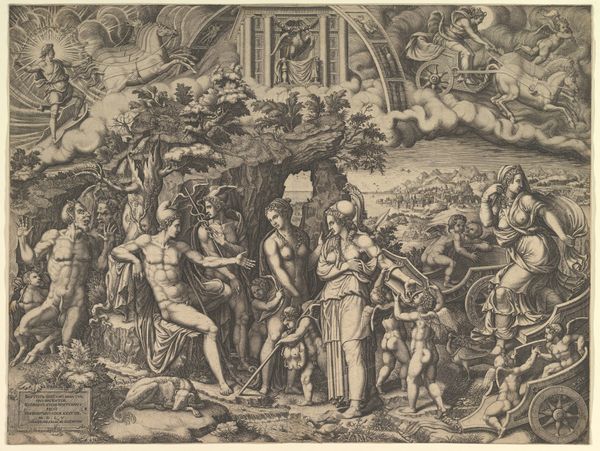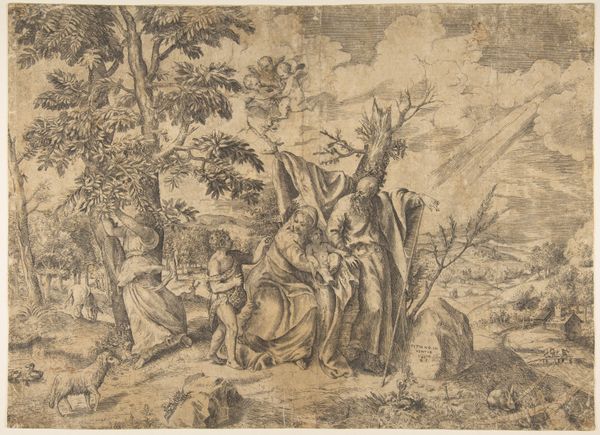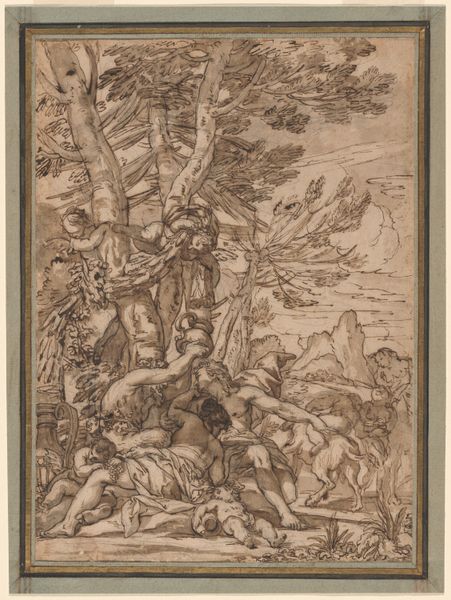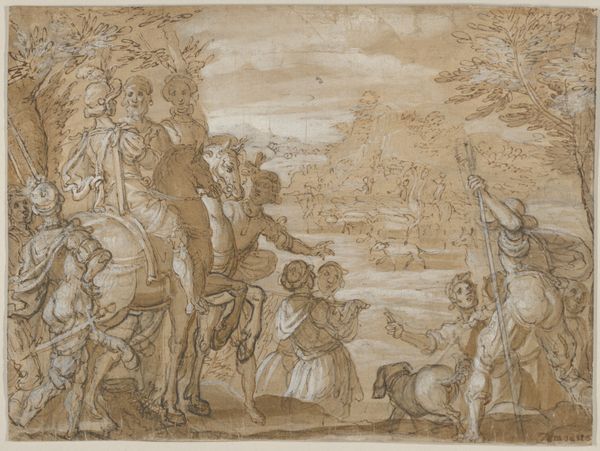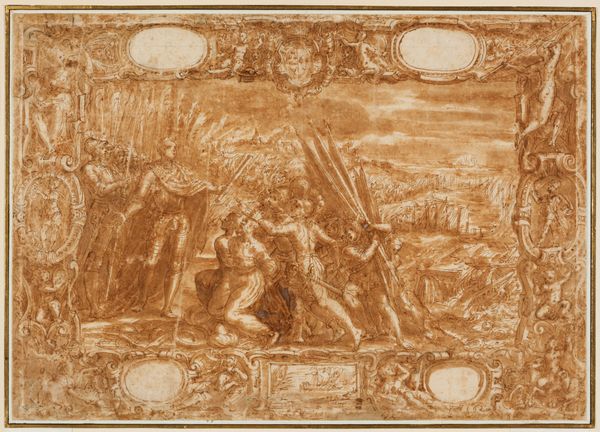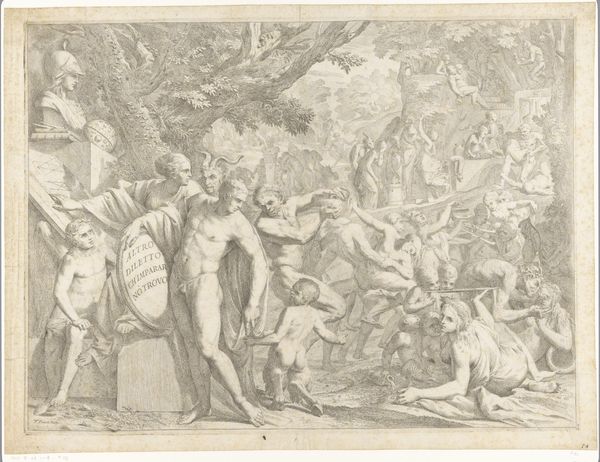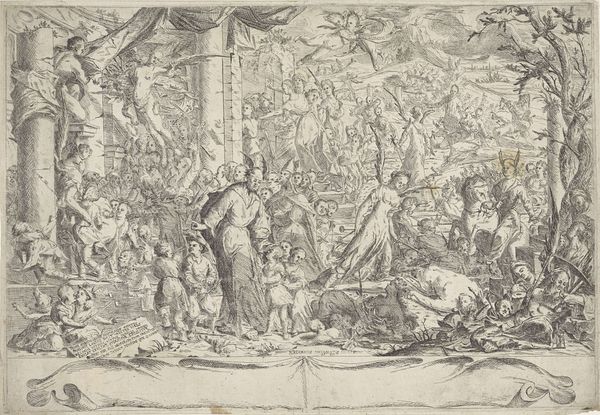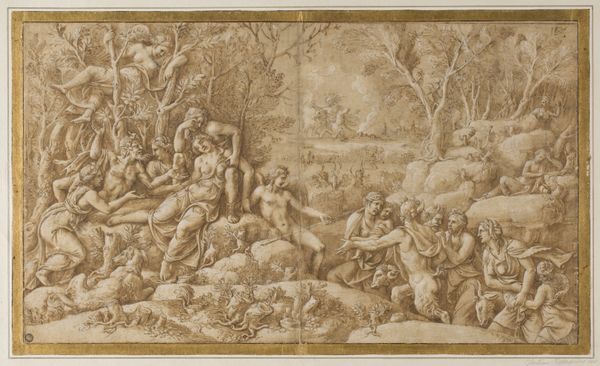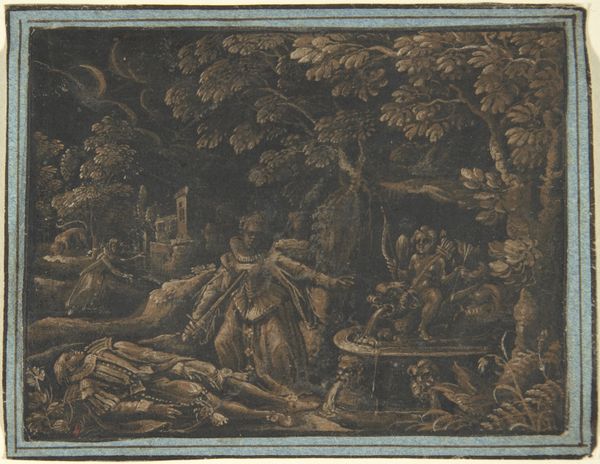
Putti harvesting wine and playing with a billy goat 1499 - 1546
0:00
0:00
drawing, watercolor
#
drawing
#
water colours
#
landscape
#
figuration
#
watercolor
#
genre-painting
#
italian-renaissance
#
watercolor
Dimensions: 415 mm (height) x 475 mm (width) (bladmaal)
Editor: Here we have "Putti harvesting wine and playing with a billy goat," made sometime between 1499 and 1546 by an anonymous artist. It's done with watercolor and drawing. I'm struck by the almost textile-like quality of the watercolour; the repeated figures give it an all-over pattern. What's your take on this, in terms of how it's made and what it signifies? Curator: It’s crucial to understand how this image implicates the Renaissance-era relationship between labor and leisure. Think about the materiality: watercolor, often associated with preparatory sketches or decorative arts. And these aren't wealthy patrons but "putti", laborers in an idealized, playful form. How does the choice of medium impact the perceived value and function of the artwork, blurring the lines between high art and craft? Editor: That's fascinating. So, you're suggesting that the choice of watercolor, instead of say, oil paint, challenges the idea of this as high art. But where does the social context fit in? Curator: The social context is deeply entwined with production. This likely wasn’t commissioned as a major statement, but perhaps as decorative work, maybe even a tapestry design. These “putti” – consider them symbolic stand-ins. Who is doing the actual, often grueling, work of winemaking? The material reality for laborers and their exploitation often funded and sustained the luxury and leisure depicted. Does it give you a different perspective? Editor: Absolutely. I hadn't considered the connection to actual labor and the commentary, or lack thereof, on that reality. The material lightness seems to obscure, not reveal. Curator: Precisely! Reflecting on the means of production allows us to ask who benefits from these seemingly innocent scenes, and at what cost. Editor: This has definitely opened my eyes to the importance of looking beyond the surface and thinking about materials and social implications! Curator: Indeed! Seeing art through the lens of production reveals the often-hidden power dynamics embedded within.
Comments
No comments
Be the first to comment and join the conversation on the ultimate creative platform.
